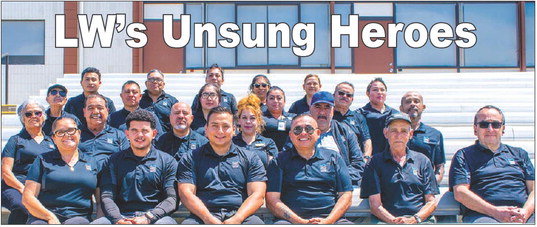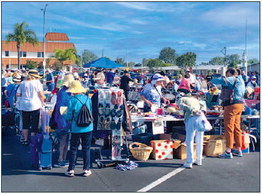Tribute to Korean War Veterans
Editor’s Note: The Korean American Association will honor veterans of the Korean War for their sacrifice and dedication with a luncheon at noon, today, June 9, in Clubhouse 2. This is a tribute from Korean American Association Officer Grace Kim, which she wrote in their honor.
by Grace Sangok Chun Kim
LW contributor
During the Japanese colonial rule from 1910-1945, more than 140,000 people were arrested, and many fled to Russia, China and United States.
A provisional Korean government of the Republic of Korea in Exile was established in Shanghai, China, in April 1919 after a demonstration that took place at the funeral of Korean Emperor Gojong, who was rumored to have been poisoned by the Japanese imperial family. Among the 20 million Koreans present at the funeral March 1, 3.1 million participated in the demonstration; 7,500 people died, 16,000 were injured and 46,000 were arrested and detained. They were all fighting for Korean independence.
During World War II, young men and women were drafted to serve in the army. They were forced into hard labor, females were used as comfort women (sex slaves), and students were sent to factories to produce military uniforms and weapons.
At the end of World War II in 1945, Korea was liberated from 36 years of Japanese colonization. But after disarming Japanese soldiers, the Soviet Union and United States of America arbitrarily divided Korea at the 38th parallel.
Three million Christians and non-communists fled North Korea to South Korea. In doing so, they became traitors to the North Korean Communist government. South Korea established a democratic government in 1948.
On June 25, 1950, the Korean War began with a surprise attack by North Korea. The Soviet Union and China helped North Korea in an attempt to unify Korea as a communist country.
A well-trained and well-prepared North Korean Communist army occupied most of the South Korea in few days. They kidnapped Christians and community leaders. Young people were drafted into the army, and many of them were later killed.
The United States and 16 United Nations countries fought for South Korea’s freedom and independence.
Gen. Douglas MacArthur, our hero, landed in Inchon Harbor on Sept. 28, 1950, and regained South Korea and most of North Korea. We thought that it would be a unified democratic country, but China sent an army 300,000-strong and attacked U.N. soldiers in the freezing cold months of November and December 1950. U.S. Marines were encircled and trapped in Chosin Reservoir mountains by the Chinese army, and many died in the fierce attacks.
Gen. MacArthur ordered a temporary evacuation from North Korea. About 200 U.S. Navy ships and Merchant Marine Cargo ships assembled at Hungnam harbor to evacuate 100,000 U.N. forces, 18,000 tanks and vehicles, and 350,000 tons of military supplies.
Additionally, there were 100,000 North Korean refugees waiting at Hungnam harbor hoping to flee North Korea aboard one of those ships. These people enthusiastically welcomed and supported U.N. Forces while they advanced on North Korea.
Lt. Gen. Edward Almond was responsible for the huge evacuation. Initially he refused to take in North Korean refugees and some commanding officers opposed rescuing these refugees, claiming that they could be enemy aliens, who might plot destructive acts in the ships.
However, South Korean President Syngman Rhee, Korean generals and particularly Dr. Bong Hak Hyun, a personal friend and advisor to Gen. Almond, urged Gen. Almond to allow the North Korean refugees aboard ships or they would be killed.
Finally at the last moment, Gen. Almond relented, saving 100,000 refugees, who were safely transported to Koje Island, South Korea. This Hungnam Evacuation was the largest, most successful massive military evacuation on the sea in military history, according to “Guinness Book of World Records.”
My husband, Dr. Luke Ikchang Kim, was a pre-med student at Seoul National University, School of Medicine. He was serving in the Republic of Korea Army Intelligence Unit as an interpreter. At 20 years old, he was asked by a ship’s captain to be his interpreter. So he experienced this historical evacuation first-hand. During the Korean War, a half-million people died, three million were wounded and 10 million were separated from their families. About 415,000 South Koreans died or were wounded; 429,000 were kidnapped; 100,000 U.N. Forces were killed and 33,629,wounded. More than 1.5 million North Koreans and Chinese died. The Korean War is not a forgotten war.
We will never forget all the young U.N. soldiers’ sacrifices and their love of liberty, justice and democracy in Korea.
In Korean, we say again and again “go map sum nida” and “sarang hap nida” or “thank you and we love you.”



